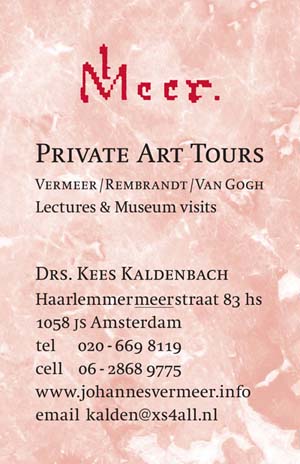 Dr Fritz Mannheimer - an article focusing on Jewish property in The Netherlands
Dr Fritz Mannheimer - an article focusing on Jewish property in The Netherlands Dr Fritz Mannheimer - an article focusing on Jewish property in The Netherlands
Dr Fritz Mannheimer - an article focusing on Jewish property in The NetherlandsSee the Online Menu of all related Mannheimer articles
Update 17 January, 2016, 7 March, 2018.
Outstanding art tours in the Rijksmuseum, Amsterdam.
Specific Mannheimer tour in the Rijksmuseum by Drs Kaldenbach.
Updated better web site at www.johannesvermeer.info
Annex 3: Mannheimer art objects as recuperated Jewish property (see web site)
In general, only a fraction of all items bought or seized by the Nazi’s for Hitler’s Führermuseum in Linz have been recuperated after WW2. By Dutch law, any art sale to anyone in Nazi Germany, whether legal or not, was nullified in 1945. In the Netherlands, 4700 objects with Jewish WW2 roots are presently listed online in the official Dutch website Herkomst Gezocht ‘Searching for provenance’. In 2014, an online search for Mannheimer objects on this site yielded 246 items, each with an NK number (Netherlands Art Property Foundation, in Dutch: Stichting Nederlands Kunstbezit).
A book and CD-rom was published in 2006 also listing these 4700 works of art bought or looted by the Nazis, stating their known provenance, and where they have landed – or whether they are still missing. This free, open website is entirely separate from the Art Loss Register, which requires search fees based on sending in photographs.
From 1945 on, Dutch museums were harsh in considering restitution requests by relatives of former Jewish owners, often remaining deaf to claims, as they preferred to retain the fine art in their collections. “We did not fight for wealthy Jews, we fought for The Netherlands” was the common Dutch wisdom around 1945-55. Probably the most shameful Rijksmuseum case gone wrong of all is the Isaac collection of wall tiles, entered voluntarily by the Isaac family for safekeeping during the war in an official Rijksmuseum buying-for-safe-keeping program. The collection was however not returned to the family despite their repeated and legally sound requests in 1955.
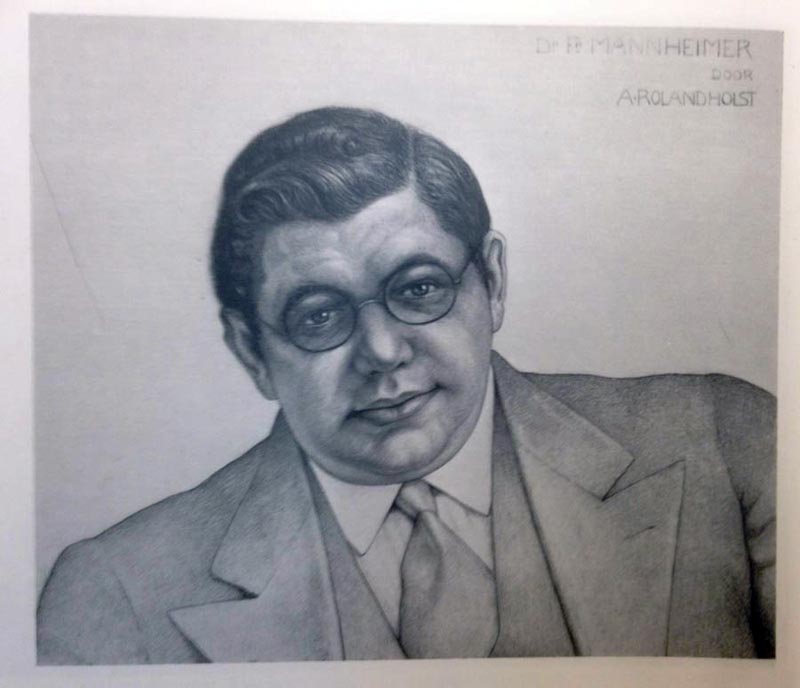 After 1998, prodded by a wave of lawsuits in Austria and responding to pressure groups, there has been a remarkable change of heart in Dutch state policy (see also note 4). This restitution turnaround resulted in founding a new institution, the ‘Commission Ekkart’, consisting of a group of cognoscenti and lawyers, authorized to making final decisions and to publish its rulings on the ‘Searching for provenance’ website.
After 1998, prodded by a wave of lawsuits in Austria and responding to pressure groups, there has been a remarkable change of heart in Dutch state policy (see also note 4). This restitution turnaround resulted in founding a new institution, the ‘Commission Ekkart’, consisting of a group of cognoscenti and lawyers, authorized to making final decisions and to publish its rulings on the ‘Searching for provenance’ website.
They rule on claims on an individual basis. Results can be seen in the artworks recently returned to descendants of former Jewish owners, such as, for example, the Jacques Goudstikker heirs. The tables have slowly turned and Dutch museums now have teams of researchers sifting out ownership issues relating to the Nazi era.
In art captions (signs) in museums the former Jewish provenance, including that of Mannheimer and Goudstikker, is now often clearly indicated. Virtually all of the objects once owned by Mannheimer and the items later bought by Hitler have been returned post-war to the Dutch state, and are accounted for; they have been found to be ‘clean’ in terms of Jewish provenance.
Five objects out of the 246 Mannheimer items listed online are presented here with additional information, shedding some light on some of Mannheimer’s art traders.
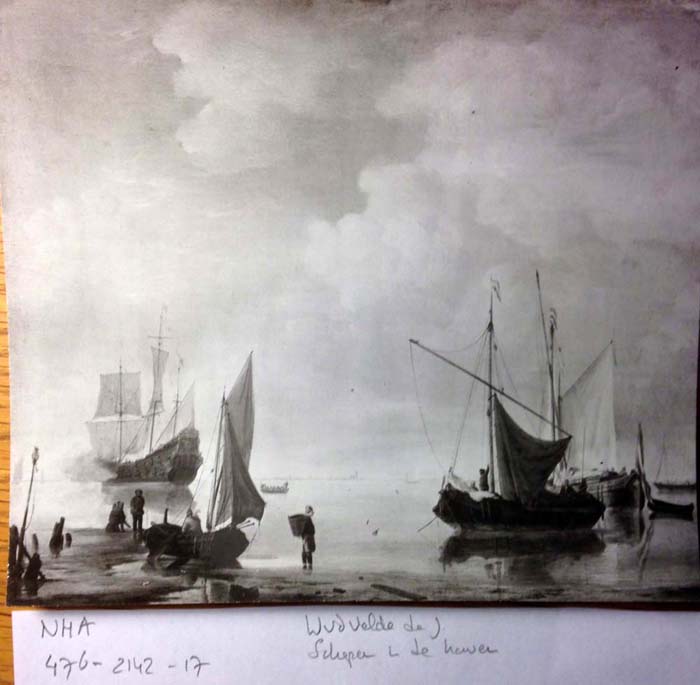
Frirz Mannheimer's bank was located in the 1920-1930s at Herengracht 412. In the 1980s or 1990s, financial documents of former Jewish clients were found in the attic of this building.
On 15 June 2000, an overall agreement was reached by all Dutch banks and stock firms to compensate relatives of all former Jewish bank account holders in the Netherlands relating to seized assets. The amount settled was 314 million Guilders. Sources: http://www.financieelerfgoedopdekaart.nl/#/amsterdam/grachtengordel-zuid/mendelsohn-en-co-(1939)/ (consulted 23 March 2014). http://retro.nrc.nl/W2/Nieuws/2000/06/16/Vp/01.html (consulted 24 March 2014).
Images of the bank office façade in Amsterdam, Rijksmuseum Print Room, inv. nr. RP-P-1903-A-24111-3 and in Amsterdam City Archives, presented in http://beeldbank.amsterdam.nl/beeldbank/weergave/record/?id=012000006180 (consulted 23 March 2014).
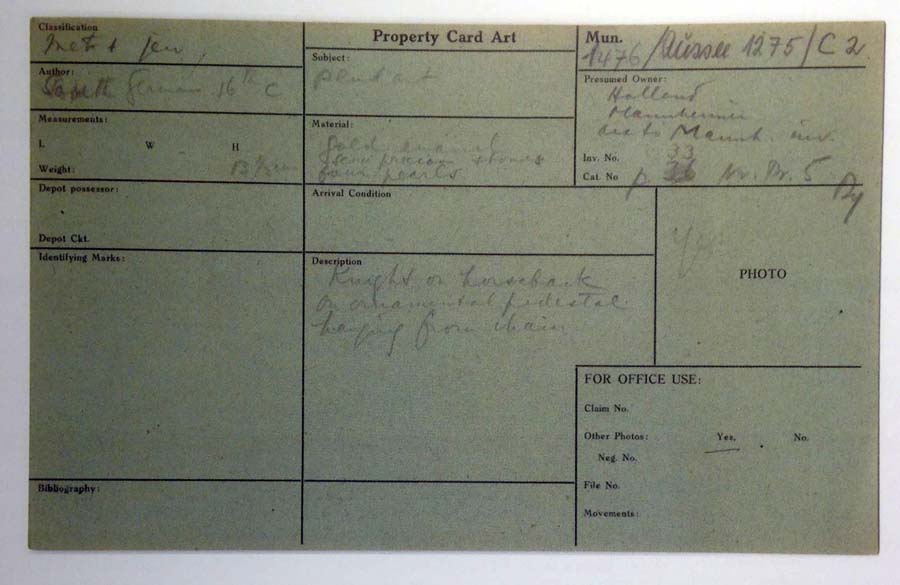
This is one of the index cards filled out after the Monuments Men tracked down the Mannheimer treasure and transported it to Allied territory. The treasure was subsequently transported north to Holland.
Dutch archival material:
Een rechtbankstuk van 5 pagina's, dd 29 juni 1951 met een historie in 34 punten, door Mr Everhardus Korthals Altes aan de Afdeling Rechtspraak van de Raad voor het Rechtsherstel.
=====================================================
Pag 4
Citaat:
"dat, de na de te Londen gedeponeerde voorwerpen bij een bominslag, gevolgd door hevige brand in de kluis, waarin zijn opgeborgen waren, in November 1940 nagenoeg alle vernietigd bleken te zijn met uitzondering van drie zaken, die door den Enemy Property Custodian te gelde zijn gemaakt, en een antiek verguld en geemailleerd reisaltaar in de vorm van een triptiek, dat blijkbaar door plundering in vreemde handen is geraakt en bij een verzamelaar in Ierland is aangetroffen;"
=====================================================
Further reading and notes: http://kalden.home.xs4all.nl/mann/Mannheimer-menu.html
=========
New information, 2016, provided by Radboud van Beekum:
Hanna Elkan (1893 Berlin - 1967 Santiago de Chile) kwam, waarschijnlijk via contacten met kunstenares Else Berg, in 1924 naar Nederland. In die tijd fotografeerde zij o.a. danseres Gertrud Leistikow. Toen zij zich in 1928 definitief in Amsterdam vestigde, aan de Van Baerlestraat 80, kreeg zij al gauw naam als portretfotograaf, voor mensen uit de muziek- (Bruno Walter, Igor Stravinsky) literatuur- (Simon Vestdijk, Victor van Vriesland) en toneelwereld (Paul Huf sr., Erika Mann). Zij verkeerde in kringen rond Leistikow, Berg, Architectura et Amicitia, Paul Huf sr., ed. In 1930 kreeg zij van bankier en kunstverzamelaar Fritz Mannheimer de opdracht het interieur van zijn huis aan de Hobbemastraat 20 vast te leggen. De 51 opnamen werden gebundeld in een album dat zich thans in het Rijksmuseum bevindt.
Radboud van Beekum
Historisch onderzoek
======
======================================================
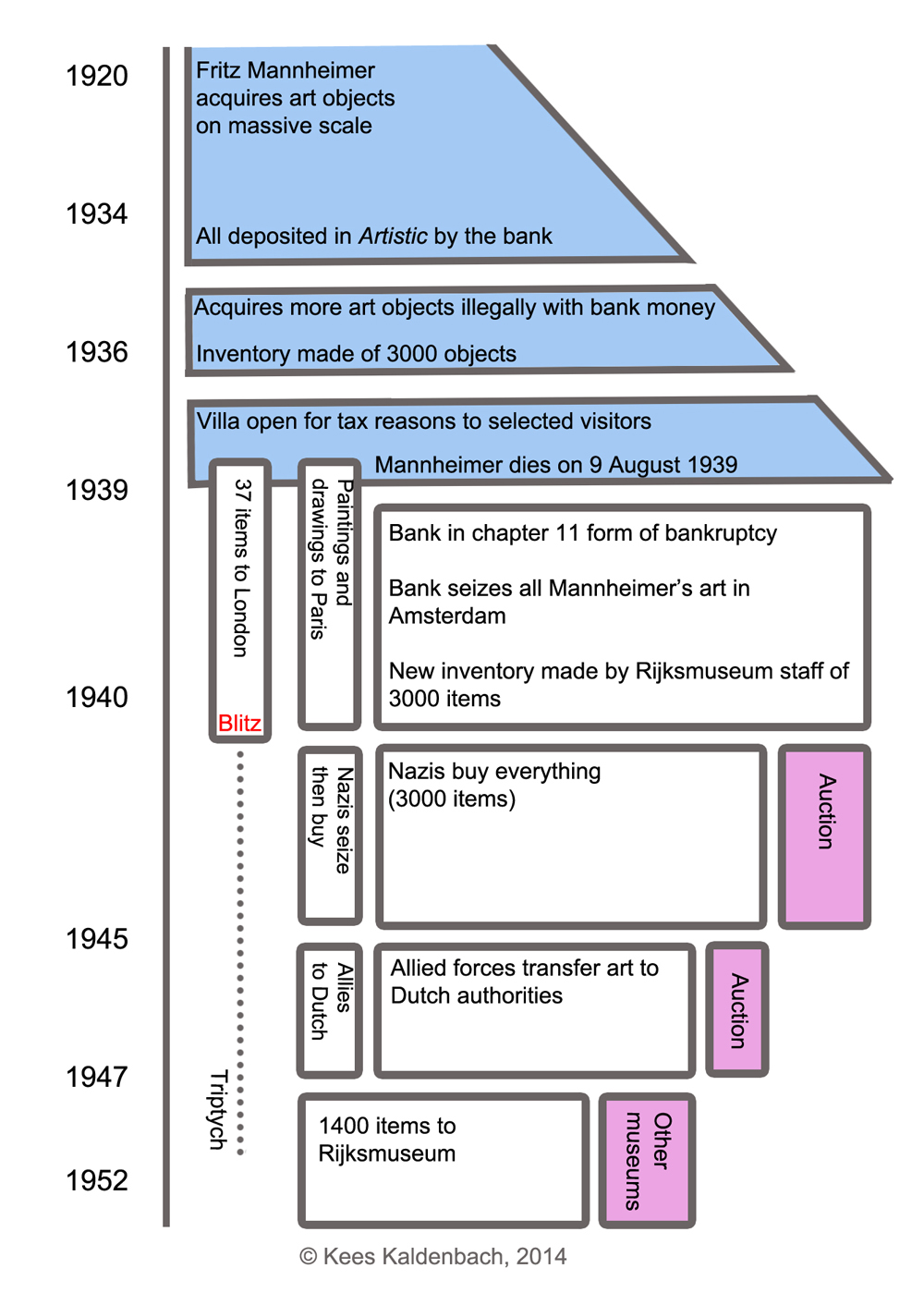

About Art Historian Drs. Kees Kaldenbach: Read a biography. Update 7 February, 2016.
Reaction, questions? Read client testimonials.
Drs. Kees Kaldenbach, art historian, kalden@xs4all.nl Haarlemmermeerstraat 83hs, 1058 JS Amsterdam (near Surinameplein, ring road exit s106, streetcar tram 1 and 17).
Telephone 020 669 8119; cell phone 06 - 2868 9775.
Open seven days a week. Menu of tours
Amsterdam Chamber of Commerce (Kamer van Koophandel) number of Johannesvermeer.info / Lichaam & Ziel [ Body & Soul] is 3419 6612.
E mail esponses and bookings to art historian Drs. Kees Kaldenbach.
This page forms part of the 2000+ item Vermeer web site at www.xs4all.nl/~kalden
Launched November 12, 2014. Updated 7 March, 2018.
From the Annual Report, Rijkmuseum, 2015, page 27. In 2015 the Rijksmuseum research has started inquiries into the provenance of the Mannheimer collection. A report to the Museum Vereniging is given in spring, 2016.

Adriaen Coorte, by Quentin Buvelot, book & exhibition catalogue.
De Grote Rembrandt, door Gary Schwartz, boek.
Geschiedenis van Alkmaar, boek.
Carel Fabritius, Tentoonstellingscatalogus.
Frans van Mieris, Tentoonstellingscatalogus.
From Rembrandt to Vermeer, Grove Art catalogue, book.
Vermeer Studies, Congresbundel.
C. Willemijn Fock: Het Nederlandse interieur in beeld, boek.
Het Huwelijksgeschenk (1934), boek over de egoïstische vrouw, die haar luiheid botviert.
Zandvliet, 250 De Rijksten van de Gouden Eeuw , boek + nieuwe stippenplattegrond!
Ik doe wat ik doe, teksten van Lennaert Nijgh , boek + cd
Het Rotterdam Boek, boek.
Bouwen in Nederland 600 - 2000, boek.
Hollandse Stadsgezichten/ Dutch Cityscape, exhib. cat.
Zee van Land / over Hollandse Polders (NL) boek
Sea of Land / about Dutch Polders (English) book
A full article on the large portrait of the marvellous preacher Uytenboogaard.
Artikel over Uytenboogaerd, Nederlandse versie.
Geert Grote en het religieuze Andachtsbild
TEFAF 2008 art fair